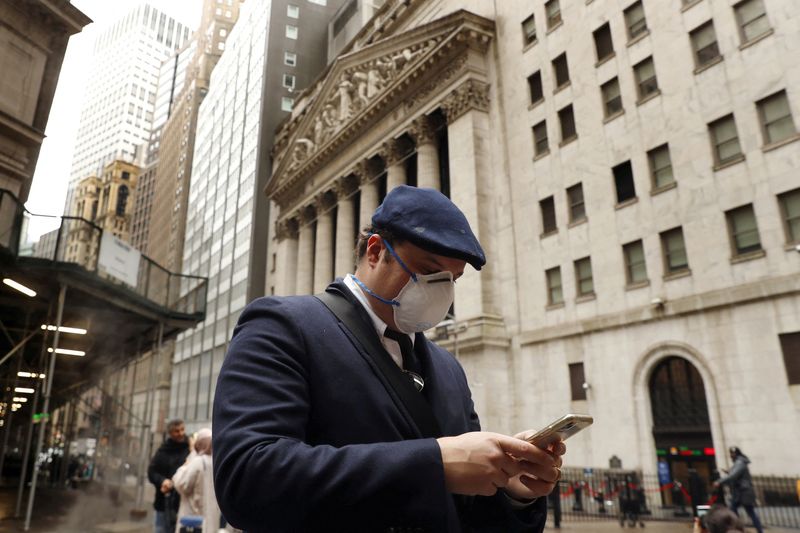By Saqib Iqbal Ahmed, Maiya Keidan and David Randall
NEW YORK (Reuters) - Wild swings in stocks are testing the resolve of investors employing one of Wall Street’s most popular strategies: buying the dip.
The S&P 500 reversed a deep selloff on Monday to finish up 0.3%, after the benchmark index crossed into correction territory, while the Nasdaq flirted with a bear market before also finishing higher, suggesting that dip buyers have not gone extinct despite big declines in stocks in the first weeks of 2022.
But while dip buying has rewarded investors in the last two years as stocks doubled from their March 2020 lows, bargain hunters now face uncertainties over how aggressively the Federal Reserve will need to tighten monetary policy this year, a potential war between Russia and Ukraine, and disappointing corporate earnings.
Indeed, the few sizeable rallies in equity indexes this month appear to have created good opportunities to unload stocks, as they were swiftly followed by more declines. The Nasdaq, which traded more than 20% off its high on Monday before turning up, has seen just two days when it rallied 1% or more.
"There doesn't seem to be a lot of confidence in risk allocations given the number of uncertainties that are out there," said Katie Nixon, chief investment officer at Northern Trust (NASDAQ:NTRS) Wealth Management.
Traders in the options markets seemed more intent on guarding against further declines than betting on gains, while retail investors, who have frequently led the charge in past episodes of dip buying, sold a net $2.1 billion in stocks between Thursday and early Monday, according to JPMorgan (NYSE:JPM).
“I don't think anything the Fed is going to do is going to make the markets happy,” said Louis Gargour, managing partner and chief investment officer at London-based LNG Capital.
Stocks are off to a rough start in 2022, with the Nasdaq down about 14% from its November closing high as prospects of faster tightening by the Fed spurred a rally in Treasury yields that dealt a sharp blow to Wall Street's growth names.
A correction is confirmed if an index closes 10% or more below its record closing level, according to a widely used definition. A close of 20% below marks a bear market.
Despite Monday's ultimate higher finish, all the major indexes are trading below their 200-day moving averages, a key technical level watched by market participants.
In the options markets, investors have remained on the sidelines or leaned bearish, with the Cboe Volatility Index leaping to its highest level in more than a year.
Overall trading in put options, typically used to place defensive or bearish bets on stock and index prices, outnumbered trading in bullish call options by 1.1-to-1 on Monday – the most bearish that ratio has been since March 2020, according to Trade Alert data.
"I am not seeing much along the line of 'quick end to the selloff,'" said Chris Murphy, co-head of derivatives strategy at Susquehanna International Group. "It still looks pretty fearful."
Moez Kassam, chief investment officer at the market neutral Anson Investments Master Funds, said many hedge funds had covered their bearish equities bets when stocks sold off in December, depleting some of the fuel that had powered past reversals.
Short interest as a percentage of float recently fell below 5% overall, its lowest level in four years, even as the dollar amount of short interest has increased, according to financial analytics firm S3 Partners.
Some investors, including Keith Lerner, co-chief investment officer at Truist Advisory Services, are taking heart from signs of extreme caution, such as the heightened bearishness of individual investors and elevated demand for downside protection, two indicators which in the past have signified market bottoms.
"The market's risk/reward has greatly improved," Lerner wrote, saying the market "is likely within a few percent of finding support."

Some remain cautious. Phil Orlando, portfolio manager and chief equity market strategist at Federated Hermes (NYSE:FHI), would prefer to wait until the Federal Reserve's Federal Open Market Committee closes its two-day policy meeting on Wednesday before deciding his next move.
"I'm not looking to catch a falling knife ahead of this FOMC meeting," Orlando said.